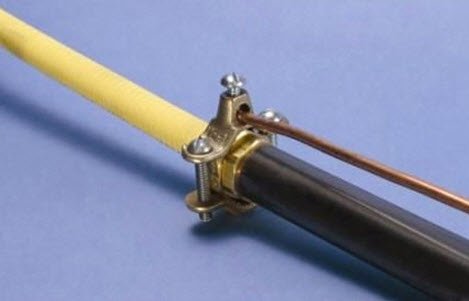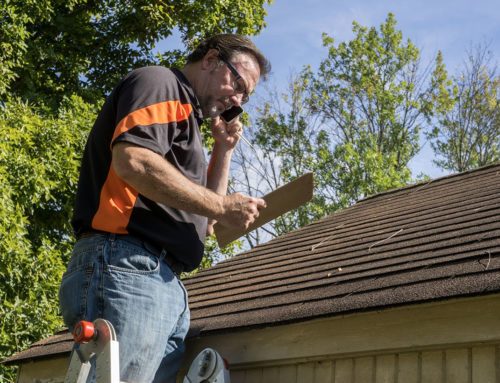
CSST safety concerns: AHIT instructor answers questions
Corrugated stainless steel tubing was developed in Japan in the 1980s and introduced in the United States in 1990 as an alternative to rigid black iron gas piping. Being flexible, CSST is easier to install than rigid piping, and because it requires fewer fitting joints, there is less chance of a leak developing during an earthquake. However, concern about its safety has grown in recent years. The city of Lubbock, Texas, recently banned the installation of the original form of yellow CSST in new homes in the aftermath of the 2012 death of Brennen Teel in a Lubbock home fire after a lightning strike that Teel’s family and the Lubbock fire marshal blamed on CSST.
Fred Buck, a home inspector since 1982 who works for King Inspections, Inc., in San Antonio and a field training instructor for American Home Inspectors Training Institute, answered some questions about CSST for AHIT.
AHIT: Can you explain why CSST is a controversial topic?
Buck: If lightning hits the house and finds its way to the CSST, it has been known to perforate or damage — put a hole in the CSST — allowing gas to leak out and be ignited, so as a result, the house catches fire.
AHIT: As a home inspector, what should you look for when you find a home that has CSST in it?
Buck: The installation of CSST is often difficult to observe at a pre-owned home. Identifying the presence of CSST is a challenge. If it is observed, the homebuyer should be made aware of it.
Bonding wires at gas piping should be observed. Bonding of gas piping has been added by manufacturers and code officials to attempt to make it safer for indirect lightning strikes. Unfortunately, bonding may not provide adequate lightning protection for direct lightning strikes.
Once made aware, the buyer should decide whether they want too leave it in the cindition it’s found or whether they should have further evaluation of the gas piping to try to make it safer. Removal of CSST and replacement with black steel gas piping is an option.
CSST is often installed incorrectly. Further evaluation of CSST gas piping should be considered by the buyer. Plumbers, electricians and mechanical contractors share responsibilities for the installation and repairs of CSST.
AHIT: Some people argue that CSST is dangerous only if it’s installed incorrectly. Is that true?
Buck: I wish that was the case. … Lightning is measured in coulombs. The number of coulombs can vary depending on whether you have a direct strike of the house or an indirect strike near the house. Direct strike means it hits something directly like a metal chimney. The strength of that lightning is usually larger and as a result, it has a greater chance of perforating or damaging the CSST.
Indirect strikes are adjacent to a house, like hitting a tree or hitting somewhere in the yard. It travels to the house and has less coulombs of power.
There’s a jacket around the CSST that may or may not conduct the electric current or the lightning. CSST with a yellow jacket may be at higher risk from lightning damage. For example, the city officials in Lubbock have recognized the installations of a newer, safer CSST system with a different type of jacket that has a mesh around the CSST. It intends to shield the CSST from damage.
Bonding wires are installed to the gas piping systems to minimize damage from indirect lightning strikes. A bonding wire has only been found to be useful at minimizing the damage on indirect strikes.
AHIT: As a home inspector, if you find the newer type of CSST in a house, is that something you still would bring up with the homeowner?
Buck: In Texas, I’m not even required to identify the presence of CSST. I’m only required to say: “Is the gas piping system bonded, and is there some type of bonding connection for CSST?”
My personal response is that I let my consumer/client know that it’s there, and I tell them if they want to know whether it’s bonded correctly, they should contact an electrician. If they want to make sure that the piping is installed correctly, they should have a licensed, CSST-certified plumber look at it. I advise placing the assessment and repairs to these other contractors.
Another problem for home inspectors has become subrogation, where the homeowner’s insurance company pays off a CSST fire claim. When there’s damage, the homeowner’s insurance company says, “Who was your home inspector? Who was your real estate agent?” When the homeowner’s insurance decides to subrogate this loss back to the home inspector, that’s a big-time concern.
The biggest concern is proper awareness by the homeowner of the presence of potentially dangerous products like CSST for the safety of their family.
AHIT: Is there any instance where you would say CSST is better to have than the old black steel piping?
Buck: It was invented and designed for use in places that have earthquakes. So if you’re in a part of the country that’s prone to have earthquakes, it may be a more useful product.
Homeowners should always be aware of their regional weather conditions. Lightning strikes are a significant concern for due diligence of property conditions and building materials.
AHIT: Is there anything I haven’t covered that you think is important to know about CSST?
Buck: Always know where the gas and electric shut offs are located for emergencies.
CSST can be damaged by driving a nail through it. Electric wires against it can arc holes through it. Lightning is not the only concern with CSST.
CSST is not included in the seller’s disclosure form, and it probably should be in the future.
Anyone who owns a home and has CSST needs to be aware of it. That’s the important part of all of this, just being aware and knowing what to do if there’s a lightning strike on the property.





